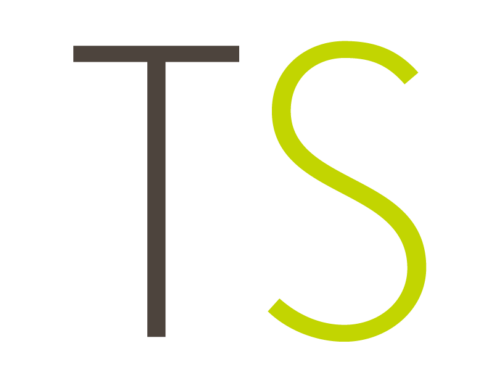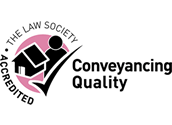This Q&A is guidance and does not constitute legal advice. The guidance provided is correct as at 10 July 2020 but is subject to change as the situation evolves.
If anyone has any questions leading on from these Q&A guidelines, they should contact a member of our Employment Team at emp@teacherstern.com.
Employees on furlough under the Coronavirus Job Retention Scheme (CJRS)
We have furloughed employees– what are our options from 1 July?
Employees can remain on furlough until the closure of the scheme on 31 October 2020.
From 1 July you are able to bring back furloughed employees to work on a part-time basis if you wish. This means they will be working part-time for you and will remain on part-time furlough.
You are able to re-furlough employees who work for you on a part-time basis as long as they were previously furloughed for a consecutive 3-week period before 30 June.
How will flexible furlough work?
Furloughed employees can begin to work part-time for their employer from 1 July 2020. Employers are also able to rotate employees who are currently on furlough. This will be treated as flexible furloughing and employers will have to start calculating usual hours, worked hours and furloughed hours in line with the flexible furloughing scheme.
Employers will need to a create a written flexible furlough arrangement with employees. The agreement should cover the hours they will work and the hours they will be furloughed. Employees will only be eligible for flexible furlough if they were previously furloughed for a continuous 3-week period prior to 30 June.
Please get in touch with us if you would like us to draft a flexible furlough agreement.
How will employer contributions and top ups work?
From 1 July HMRC will pay 80% of salary, capped at £2,500 (with 80% or cap reduced proportionately by any hours worked).
From 1 August 2020, employers will be required to pay employer NICs and employer pension contributions due.
From 1 September 2020, employers will be required to pay employer NICs and employer pension contributions due as well as 10% of employees’ furlough pay, capped at £312.50 per month. The government will pay 70% of employees’ furlough pay, capped at £2,187.50.
From 1 October 2020, employers will be required to pay employer NICs and employer pension contributions due as well as 20% of employees’ furlough pay, capped at £625 per month. The government will pay 60% of employees’ furlough pay, capped at £1,875.
How will we bring furlough to an end?
The idea behind the CJRS is that employees will come back to work as previously on 1 November 2020. However, if this is not appropriate for your company then you may be able to make employees redundant provided that you follow a fair process.
The Treasury has set out that the CJRS payments are to be used to “continue the employment of employees” and it is one possible interpretation that employers should only use the scheme for as long as they are trying to keep the jobs open and should stop using the CJRS once they have decided that they will make redundancies. However, this is not the official position of HMRC and in the absence of further guidance employers can continue to use the scheme during redundancy consultation and notice periods.
Managing a safe return to work
Can we be liable if an employee contracts Covid-19 at work?
Employers have a statutory duty to provide a safe place of work. Employers may be liable if an employee contracts Covid-19 at work but only if the employer was negligent in some way and the negligence caused or materially contributed to the claimant contracting Covid-19.
To ensure that an employer is in the best position to defend any such claim or investigation they should be able to clearly show that they, and their employees, have complied with the government advice and are taking all precautions necessary. Employers should also ensure that any steps put in place following a health and safety assessment are being followed by employees.
In practice a claim of this nature would most likely be brought by a vulnerable employee with severe symptoms. Employers should pay extra attention to how vulnerable employees are being treated. Employees classified as vulnerable due to Covid-19 will also qualify as disabled within the meaning of the Equality Act. Employers may be required to transfer these employees to safer alternative work or even allow them unpaid leave.
How do we avoid discrimination in our return to work plans?
Employers remain under the duty to ensure that work plans don’t disadvantage protected groups. Employers may want to change arrangements for moving around the building or stopping lifts from being used but these arrangements must not disadvantage the disabled. Employers may also want to change working hours, e.g. staggered start times, but should make sure that this does not disadvantage women.
Employers should think about the impact of the changes they make in practice. If you find any disadvantage consider if there are any adjustments that could be made. If your plans are a proportionate means of achieving a legitimate aim, and there are no realistic less discriminatory alternatives available, the discriminatory impact will be justified.
Employers should try to ensure that they are not indirectly discriminating against any group however they need to balance this against prioritising certain groups over other groups. Employers should keep the government guidance under review but should try to avoid making decisions purely on the basis of protected characteristics, except in relation to pregnancy and the over-70s (who are currently classified as vulnerable).
Sickness and Sick Pay
Do we have to pay employees who are off sick with Covid-19 symptoms but have not been diagnosed?
You must pay sick pay to employees if they are off work for at least four days and any of the following apply:
- they have coronavirus symptoms
- they are self-isolating because someone they live with has symptoms
- they are self-isolating because they’ve been notified by the NHS or public health authorities that they’ve come into contact with someone with coronavirus
- they have a letter from the NHS or a GP telling them to stay at home for at least 12 weeks (called ‘shielding’)
How much is SSP and can we reclaim it?
The SSP payable to employees is £95.85 a week for up to 28 weeks.
You may be entitled to reclaim up to two weeks of SSP starting on or after 13 March 2020, under the Coronavirus Statutory Sick Pay Rebate Scheme if:
- you have already paid your employee’s sick pay;
- you’re claiming for an employee who’s eligible for sick pay due to coronavirus;
- you have a PAYE payroll scheme that was created and started on or before 28 February 2020; and
- you had fewer than 250 employees on 28 February 2020 across all your PAYE payroll schemes.
How do I pay an employee who is furloughed but is also sick?
An employee who becomes sick whilst on furlough can either be paid SSP or continue to be paid under the CJRS. This is a decision for you to make as an employer.
If an employee remains on furlough, you can continue to claim their salary through the full grant under furlough scheme in respect of that employee who becomes unwell whilst on furlough leave.
If you decide to move the employee to sick leave, you will have to pay the SSP or company sick pay due and can no longer claim for the employee’s salary through the CJRS.
What is the £1,000 bonus payment promised by the Government?
Employers who bring workers back from furlough and retain them in employment until the end of January 2021 will qualify for a £1,000 bonus.
To qualify for the bonus the employee would need to remain continuously employed through to the end of January 2021 and earn over an average of £520 per month over that period (this is the lower earnings limit for qualifying for certain benefits). The bonus will be paid from February 2021.
If you would like to discuss the above with one of the team or have a question, please speak to one of the team:

Jessica Verrall
Associate






